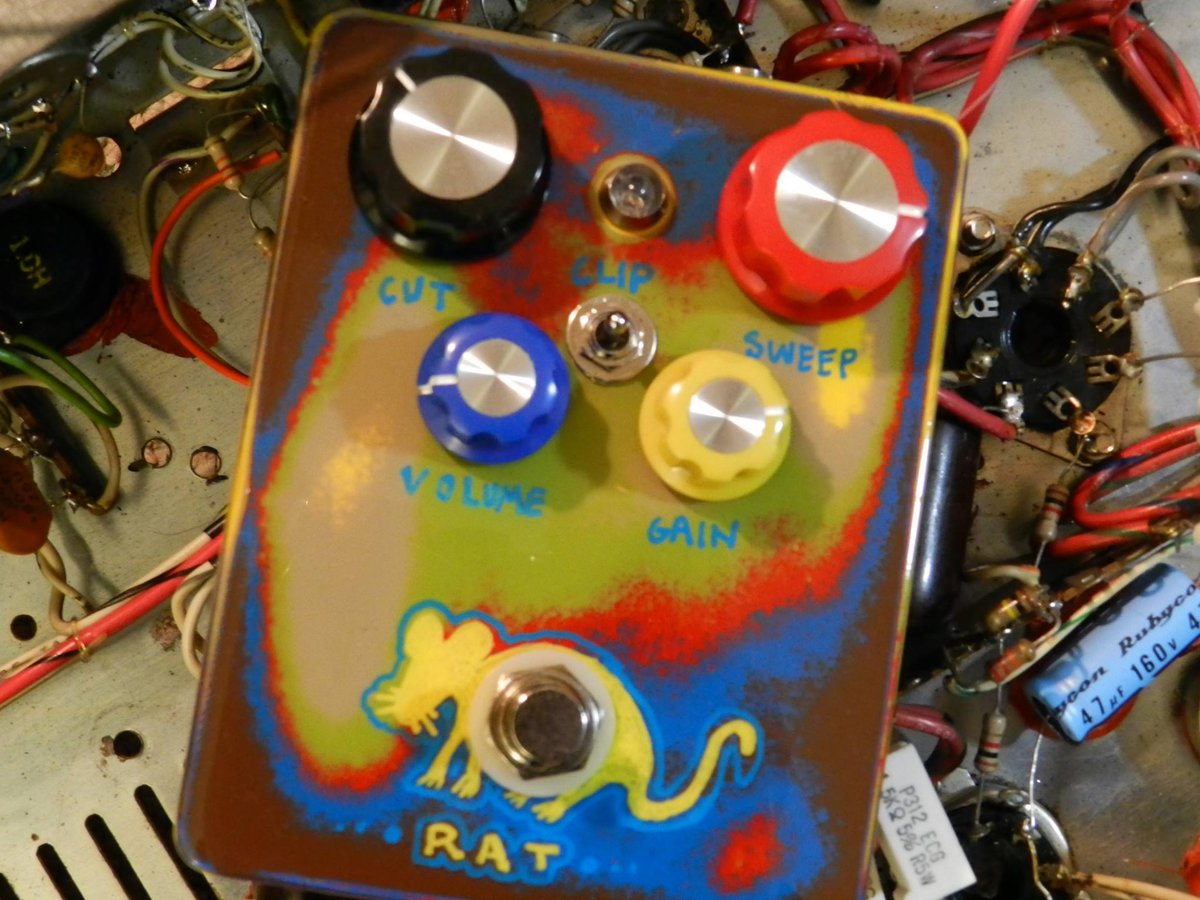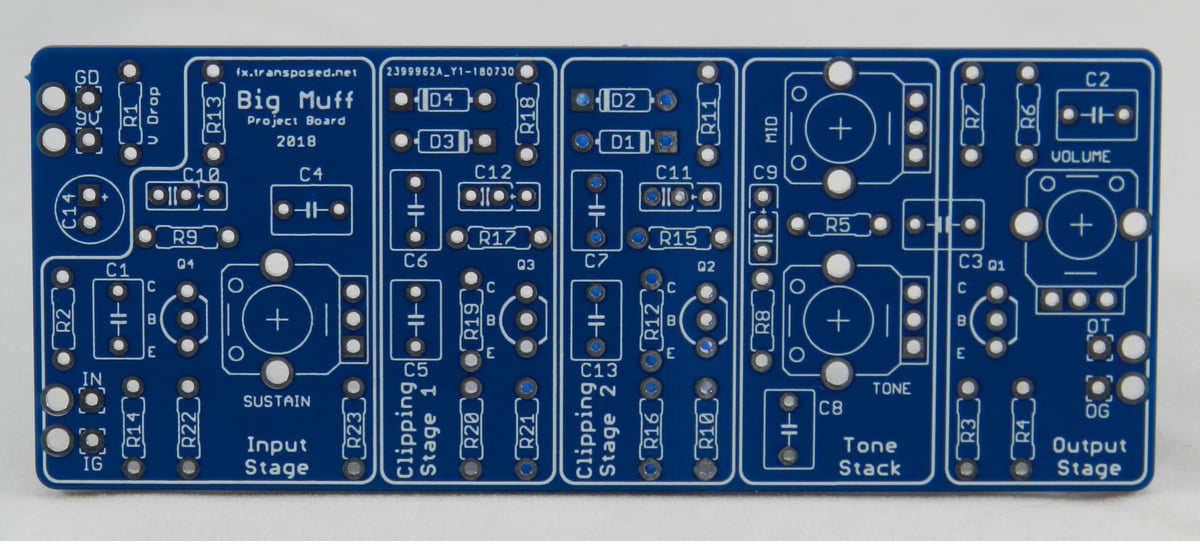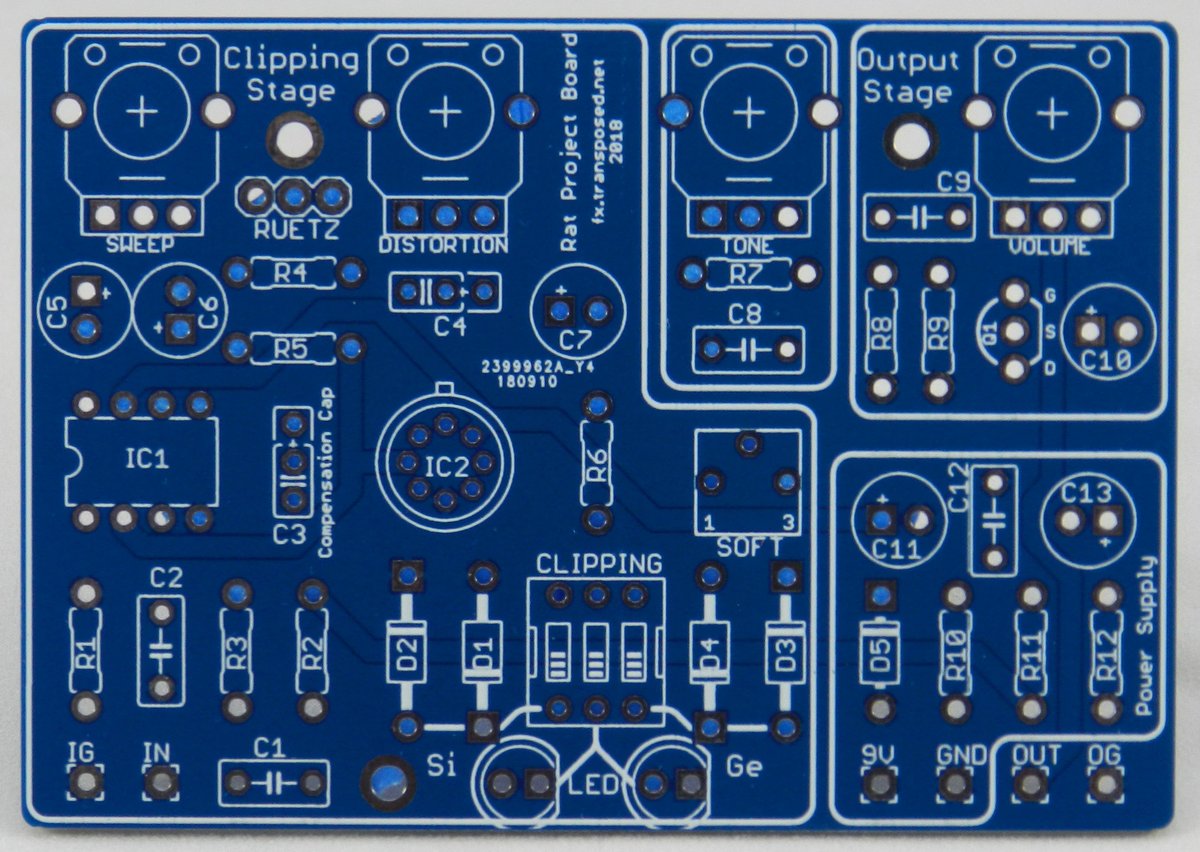chris.knudson
Well-known member
I'm loving this thread.
I love this idea. You could make breadboarding pedals as simple as building things out of legos. A lot of these circuits use common building blocks. If there were several of the elemental building blocks that could just be plugged into a breadboard, it could really help people learn and understand how to build and modify effects.Ive thought about populating a few MCs with sockets and trimmers as well as some other smaller classics(green ringer, FF, etc) and just playing though the breadboard with them.
The very first pedal was a Bazz Fuss on a perf board. Then I started reading about how different capacitors can filter out different frequencies, so I built another one with different cap values. It sounded completely different, so then I built a third one with with everything socketed so I could experiment with different parts -- not just the caps. I haven't done that since, but I still socket components that I want to experiment with, especially diodes, transistors and ICs.Yeah, I'm into socketing entire boards and utility PCBs.
It can seriously cut down on time spent breadboarding, if you're exploring one circuit in depth.
Been a little absent on the board this week. Started a new job on Monday and have been doing training videos all week. My brain matter isn't as elastic as it once was and I've been pretty numb by 3pm each day. Anyhow.The very first pedal was a Bazz Fuss on a perf board. Then I started reading about how different capacitors can filter out different frequencies, so I built another one with different cap values. It sounded completely different, so then I built a third one with with everything socketed so I could experiment with different parts -- not just the caps. I haven't done that since, but I still socket components that I want to experiment with, especially diodes, transistors and ICs.

That's why it was my first pedal -- super simple, easy to breadboard, easy to tack up on a piece of perf board. I had just gotten my soldering station and wanted to fire up, and this was the simplest thing I could find to build.I don't know if a bazz fuss is big enough to bother with
I love this idea. Seeing the schematic on the PCB demystifies the circuit and makes it so you can see which parts are doing what in the circuit. I can read a schematic and understand what's happening, and I can look at a PCB and understand the signal path. However, I can't look at a schematic and instantly translate it to what's happening on the PCB. I have to map it out in my mind, which takes work for me.Been a little absent on the board this week. Started a new job on Monday and have been doing training videos all week. My brain matter isn't as elastic as it once was and I've been pretty numb by 3pm each day. Anyhow.
Somewhere down my "want to do" list is laying out a few classics like effectslayouts has with the fuzz face
View attachment 68134
A lot of these are so simple to breadboard but for me and my goldfish brain, seeing the schematic speeds up the process tremendously.
This is especially true if I'm say, breadboarding before bead on Tuesday night and get back to it Saturday morning.
Plus, if one was doing something like you/FF are doing with the Baron, being able to grab a prepopulated socketed board and quickly modify values and connect to more circuitry, that would be awesome. No need to even dig up a schematic
It would also be a great educational tool for newer buildiers learning to read schematics and starting to experiment.
I don't know if a bazz fuss is big enough to bother with but securely a FF, TB and a BT. Add in a few different filter/eq boards like I believe guitar PCB has and now you can bend and blend, mix and match.
I'm sure some will disagree and say this is a waste but for me, it's just another way to get to Detroit. I think that I was forced to breadboard so much in school that it kind of ruined it for me. That and the goldfish brain thing. Though, one thing I've started doing when BBing is printing the schematic when available and using color pencils to denote the jumper wire color used at each connection. That does help me get my bearing when I return to it 4 days later



